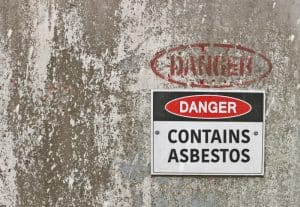By Nabila Al Hasan, Regulatory Compliance Specialist
 Asbestos is a naturally occurring mineral fiber. Asbestos is an electrical insulator and highly heat resistant which makes it an excellent component for insulation and fire-retardant materials. For these reasons, it was used in the manufacturing of building construction materials for many years. It has been widely used in attic and wall insulations, vinyl floor tiles, roofing shingles, textured paint, hot water, and steam pipe insulation, heat-resistant fabrics, automobile clutches, and brakes and for many other purposes.
Asbestos is a naturally occurring mineral fiber. Asbestos is an electrical insulator and highly heat resistant which makes it an excellent component for insulation and fire-retardant materials. For these reasons, it was used in the manufacturing of building construction materials for many years. It has been widely used in attic and wall insulations, vinyl floor tiles, roofing shingles, textured paint, hot water, and steam pipe insulation, heat-resistant fabrics, automobile clutches, and brakes and for many other purposes.
Asbestos Exposure Risks
While its strength, flame resistance, and insulating properties rendered it useful, inhalation of asbestos fibers has been proven dangerous and is now a well-known health and safety hazard. When buildings and homes containing asbestos are disturbed or renovated or torn down, inhalable fiber dust is released into the air. Exposure to asbestos increases the risk of developing lung diseases and long-term exposure can lead to asbestosis – which is marked by lung tissue scarring and shortness of breath, which may also lead to complications such as lung cancer, mesothelioma, and pulmonary heart disease.
Asbestos & OSHA
OSHA’s construction industry asbestos standard (Title 29 Code of Federal Regulations (CFR), Part 1926.1101) regulates asbestos exposure and protects individuals involved in repair, renovation, removal, and demolition of asbestos-containing materials. Some of the major requirements of the asbestos standard include:
- An 8-hour permissible exposure limit (PEL) of 0.1 fiber of asbestos per cubic centimeter of air, with a 30-min excursion limit of 1.0 asbestos fibers per cubic centimeter.
- Requiring initial and periodic exposure assessments to ascertain expected exposures during that work operation.
- Use of engineering controls to meet the PEL. When this is not possible, engineering controls must be used to reduce exposures to the lowest levels possible and then supplemented by using appropriate respiratory protection.
- Demarcating “areas in a manner that minimizes the number of persons within the area and protects persons outside the area from exposure to airborne asbestos.”
- No smoking, eating or drinking while working in these demarcated areas.
- Requiring warning signs and caution labels to communicate the presence of hazards and hazardous material.
- Training, record keeping, medical surveillance.
Consult With Regulatory Experts
If you are struggling to navigate chemical safety management, our regulatory experts are here to advise.
Get in touch with our compliance specialists to hear more about how we can help support you.


